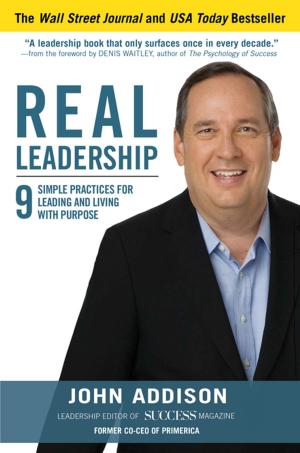Institutional Innovation in Higher Education Resource Allocation in China's Transitional Economy
Business & Finance| Author: | Kang Ning | ISBN: | 9781259644610 |
| Publisher: | McGraw-Hill Education | Publication: | March 11, 2016 |
| Imprint: | McGraw-Hill Education | Language: | English |
| Author: | Kang Ning |
| ISBN: | 9781259644610 |
| Publisher: | McGraw-Hill Education |
| Publication: | March 11, 2016 |
| Imprint: | McGraw-Hill Education |
| Language: | English |
The Essential Guide to Allocating Resources and Improving Higher Education in China’s New Economy
From 1978 to 2008, China has experienced a remarkable thirty-year period of economic reform and social transformation. In this time, enrollment in higher education increased by 34 times from 856,000 students to more than 29 million. Six years later, the number rose to more than 35 million, with a gross enrollment of 37.5%.
What has led to such a rapid expansion of China’s higher education? What can we learn from the changes we’ve seen? How should we allocate resources to build a better future?
In this powerful and illuminating study, based on years of research, Professor Ning Kang reveals:
* How China’s higher education system has evolved with China’s economy
* Which factors, trends, and characteristics of educational institutions have the greatest impact on resource distribution
* How changes in the economy conform to a “rule of the sea” that directly affects higher education
* How modern universities can adjust organizational structures to comply with economic and governmental changes
* How China’s institutions can allocate resources to drive innovation, optimize potential, and create new opportunities
Filled with detailed studies, academic assessments, and measured analysis, this book examines three decades of unprecedented change and growth in China’s higher education system during its most dramatic time of economic transition. Professor Ning Kang draws from her vast experience as a university teacher, a Ministry of Education spokesperson, and the head of China Education Television to create an in-depth portrait of the nation’s higher education institutions—as well as a powerful new model for the most effective allocation of China’s resources.
Thought-provoking, eye-opening, and brilliantly researched, this book will help educators and administrators understand China’s past successes in the higher education market—and forge a new path for China’s future.
The Essential Guide to Allocating Resources and Improving Higher Education in China’s New Economy
From 1978 to 2008, China has experienced a remarkable thirty-year period of economic reform and social transformation. In this time, enrollment in higher education increased by 34 times from 856,000 students to more than 29 million. Six years later, the number rose to more than 35 million, with a gross enrollment of 37.5%.
What has led to such a rapid expansion of China’s higher education? What can we learn from the changes we’ve seen? How should we allocate resources to build a better future?
In this powerful and illuminating study, based on years of research, Professor Ning Kang reveals:
* How China’s higher education system has evolved with China’s economy
* Which factors, trends, and characteristics of educational institutions have the greatest impact on resource distribution
* How changes in the economy conform to a “rule of the sea” that directly affects higher education
* How modern universities can adjust organizational structures to comply with economic and governmental changes
* How China’s institutions can allocate resources to drive innovation, optimize potential, and create new opportunities
Filled with detailed studies, academic assessments, and measured analysis, this book examines three decades of unprecedented change and growth in China’s higher education system during its most dramatic time of economic transition. Professor Ning Kang draws from her vast experience as a university teacher, a Ministry of Education spokesperson, and the head of China Education Television to create an in-depth portrait of the nation’s higher education institutions—as well as a powerful new model for the most effective allocation of China’s resources.
Thought-provoking, eye-opening, and brilliantly researched, this book will help educators and administrators understand China’s past successes in the higher education market—and forge a new path for China’s future.















